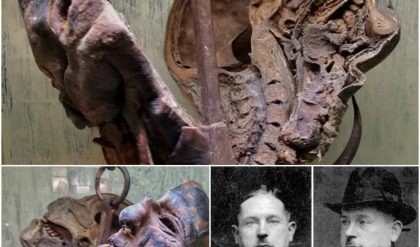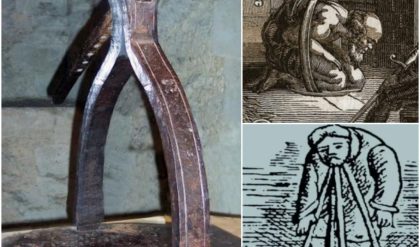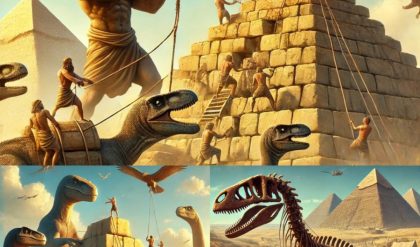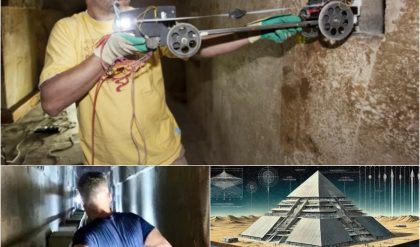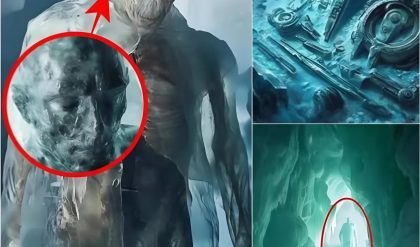Archaeologists Seek Answers About the Past, But Often Find More Questions
Every day, archaeologists search for answers about the past of Earth and humanity. However, instead of clarity, they often uncover more mysteries.
Discoveries suggest that some ancient civilizations were far more advanced than we once believed, and certain ancient artifacts simply cannot be explained by modern science.

In today’s discussion, we explore some of these puzzling discoveries that continue to defy explanation.
The Divine Architect
Hinduism, one of the oldest religions in the world, has over 900 million followers globally. While most Hindus reside in India, a significant number are also found in Nepal, Bangladesh, and Indonesia.
The construction of Hindu temples in India began nearly 2,000 years ago, and their architectural styles have evolved dramatically over time. When we observe these temples and other ancient monuments, we cannot help but marvel at their magnificence and mathematical precision.
Who were the engineers behind these masterpieces? How did they achieve such architectural feats without modern measuring tools? These structures have endured for centuries, sometimes even millennia, raising questions about the level of knowledge possessed by their builders.
Ancient Hindu texts attribute these creations to Vishwakarma, the Divine Architect. Depictions of this deity typically show him with three heads and four arms, each holding a different object.

A famous temple dedicated to Vishwakarma exists in Nalasopara, Mumbai. The Shwara Mahadev Mandir houses a 1,000-year-old statue of Vishwakarma, which curiously features an object resembling a theodolite. This modern instrument measures vertical and horizontal angles and is used in navigation, agriculture, meteorology, and construction.
Since Vishwakarma is revered as an architect and builder, it would be fitting for him to use such an instrument. However, the first theodolite was invented only in 1720 by English inventor Jonathan Sisson. Other statues of Vishwakarma depict him holding objects similar to a level, plumb line, and soil probe, leaving archaeologists puzzled as to how such tools appear in carvings over a millennium old.
The Sumerian Priest-King Mystery
In 1929, an archaeological team from the German Oriental Society was excavating the ancient city of Uruk, now known as Warka, in southern Iraq. During their dig, they uncovered a highly unusual object: the upper portion of a gray alabaster statuette buried inside a ceramic vessel.

Estimated to be around 5,000 years old, the statuette represents a priest-king, a prominent figure in Ur, responsible for mediating between humans and the gods. Traditionally, priest-kings were depicted performing religious ceremonies.
The statue was meticulously carved, featuring the priest-king with a headband, long beard (without a mustache), and a skirt secured by a wide belt—consistent with depictions found in stone reliefs and other artifacts.
However, what baffles archaeologists to this day is why the broken statuette was deliberately buried inside a vessel. The piece is currently displayed at the Iraq Museum in Baghdad.
The Hammer That Shouldn’t Exist
On an afternoon in 1936, Max Hahn and his wife were hiking near London, Texas, when they noticed a rock embedded with a piece of wood. Curious, they took it home, where it was eventually forgotten for a decade.
Years later, their son broke the rock open, revealing a hammer encased within. The hammer measured approximately 15 cm in length and 25 mm in diameter, suggesting it was a tool for light work. Its composition included 96.6% iron, along with small percentages of other elements.
In 1983, the hammer was purchased by creationist Carl Baugh, who named it the London Hammer and promoted it as a remarkable find. A 1985 analysis dated the surrounding rock to be between 400 and 500 million years old. Additionally, the wooden handle appeared to be partially fossilized.
This raises a significant question: how could a man-made tool be found inside a rock that predates the existence of humans by hundreds of millions of years? The artifact is currently housed at the Creation Evidence Museum in Glen Rose, Texas.
The Enigma of the Roman Dodecahedrons
Nearly 300 years ago, buried alongside ancient coins in a field in England, the first Roman dodecahedron was discovered. This metallic object has 12 equal pentagonal faces, each with a hole in its center. The holes vary in diameter, and each face features a protruding knob.
Since that first discovery in 1739, over 100 similar dodecahedrons have been found across Northern Europe, dating from the 1st to 5th centuries AD. Their sizes range from that of a golf ball to slightly larger than a baseball.
Despite numerous theories, no one has definitively determined the function of these objects. Many dodecahedrons are displayed in museums across Europe, yet their purpose remains unknown.
Conclusion
These artifacts—whether the tools depicted in Vishwakarma’s statues, the buried priest-king statuette, the London Hammer, or the Roman dodecahedrons—challenge our understanding of history. They hint at the possibility that ancient civilizations possessed knowledge and technology far beyond what we currently recognize.
Could there be explanations waiting to be uncovered, or do these discoveries suggest an alternative narrative of human history? The past still holds many secrets, and perhaps, one day, we will find the answers we seek.
